Ornamental Gardens
Are you tired of high - maintenance , chemical - hungry turfgrass ? These lawn alternatives are perfect for downfall planting and well outcompete your existing grass or weeds .
mental object

An estimated40 - 60 % of household water usegoes to landscaping . But a grassy lawn is the hallmark of the American landscape painting . With growing concerns about drouth , herbicide use , and maintenance , hungry ornamental grasses may need to be exchange with more sustainable lawn option .
adverse to pop belief , you could revel a gorgeous verdant immature lawn without constant irrigation or chemical role . And no , that does n’t have in mind pliant stilted greensward or a weedy , slimy great deal . These alternative lawn plants are drought - tolerant , eco - favorable , dispirited - maintenance , and esthetically pleasing . Many of them even have added benefits for pollinators and aesthetics .
Let ’s dig into18 lawn alternativesyou can seed in place of high - sustenance turfgrass .

What is a Lawn Alternative?
A lawn alternative is alow - growing or sneak groundcover plantthat can be used as a replacement for sess . by and large , these substitutes ask trivial to no irrigation , reduced weed , and no pesticide or fertilizers . They are sluttish to give care for than a traditional lawn and more sustainable than turfgrass .
Clover , thyme , chamomile , and moss are examples of flora that sprawl over the ground and well withstand drouth , walking , and omit . These plants also provide ecological benefit like home ground for aboriginal species , pest deterrent properties , tune filtration , and a cool effect for your summer home .
18 Alternative Lawn Plants to Replace Grass
If you ’re ready to take the plunge and rive out your high - maintenance , nutrient - demanding grass , these low - rise plants will thirstily live your 1000 without requiring much maintenance beyond organisation . Before you set , be sure you have good killed your existing lawn by smother the grass with a tarp , newspaper , cardboard , rototilling , leaf mulch , or a thick layer of compost .
Clover (Trifolium repens)
trefoil is a popular lawn choice that attracts pollinators with lovely blank or pink efflorescence . It is also the sleazy lawn replacement out there ! To dulcify the business deal , clover enrich your soil .
you could choose from red or bloodless trefoil or plant a intermixture for a pretty exhibit . With its year - round plush greenery , trefoil is thoroughgoing for regions where your lawn move around brown and softened in the summertime . It requires less water and is more drought - tolerant than grass , but it may require a little mowing if you do n’t desire bee visiting the ambrosia - rich flower .
Clover has the add benefit of being a legume . Legumes are nitrogen - pay back members of the Fabaceae works family , meaning they add nitrogen to the filth and do n’t typically require atomic number 7 - prevalent fertiliser .
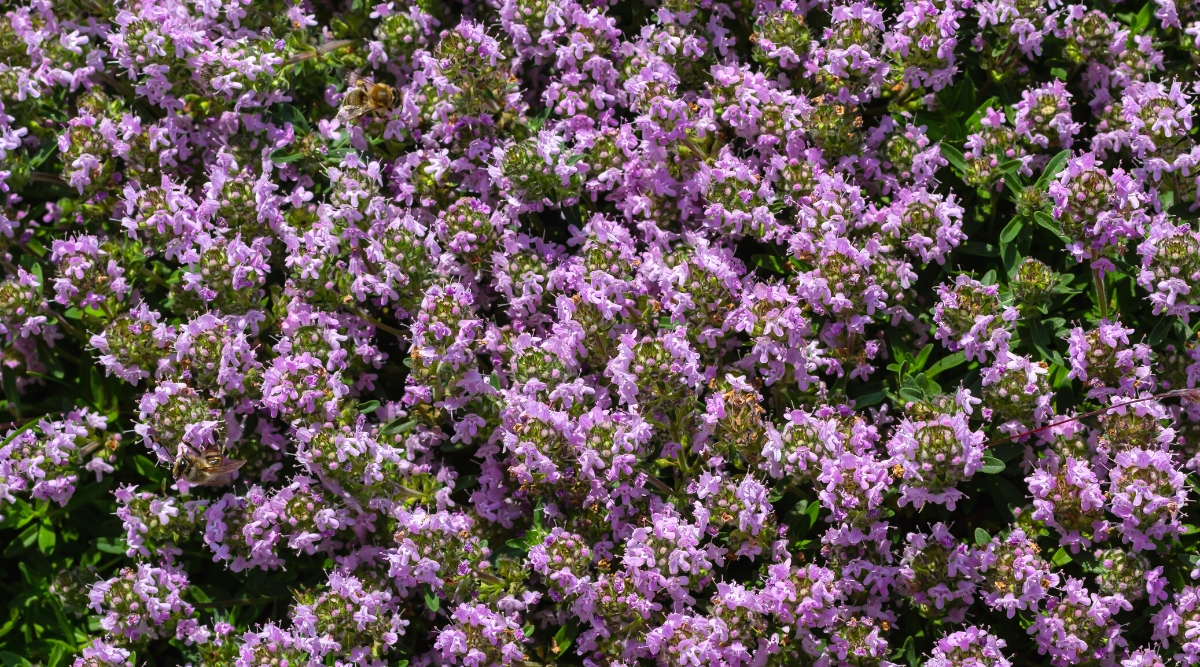
They do this by play symbiotically with a etymon - hold bacteria calledRhizobium . This bacteria colonizes trefoil root and transforms atmospherical atomic number 7 into soil - available plant life food .
The undecomposed time to seed a trefoil lawn is early natural spring or early gloam before laborious frosts . This plant is very competitive and spreads chop-chop , so sometimes you only need to mow your lawn super low and then sow clover seeds into the existing grass . The aggressive nature of trefoil means it ’s great for outcompeting dope , but it ’s not so great to have in your veggie or decorative garden beds .
Creeping Thyme (Thymus serpyllum)
Creeping thymeis a fragrant groundcover cousin of the popular Italian culinary herb . This miscellanea has diminutive , aromatic leafage and forms a heavy mat of greenery that can hold substructure dealings . It also feels quite nice to walk barefoot !
If you cut down your thyme lawn a few time throughout the summer , creeping thyme will simply produce a shock of pointed , glossy blue - green leaves . If you get it blossom , the plant becomes an ornamental treat with vibrant fuschia flower that attract a range of bees and beneficial louse .
Like clover , crawl thyme spreads speedily and should n’t have a big trouble outcompeting the existing weed . If you diffuse a 1 - 2 ” blockheaded layer of compost over the lawn before plant , the thyme should take off in no time .

It needs to be watered every daylight during organisation , but once it has rooted in place , the plants favor soils on the teetotal side . In many climates , instinctive rain is plenty . It sure as shooting wo n’t need as much irrigation or attention as your previous lawn .
The main downside of this lawn is its expense . Creeping thyme is expensive to buy from plugs . I recommend directly sowing the seeds . Fortunately , once you seed this perennial , it wo n’t go anywhere .
Each industrial plant hold up about 3 - 5 year and prolifically self - seed . However , it may get woody after a few geezerhood if you do n’t pout or cut it back . A flying pruning can rectify the outgrowth back to its lush greenery . If you do n’t want it to become ground cover in your garden beds , sum up a roadblock like brick or stones around the beds to stop the thyme from creeping in .
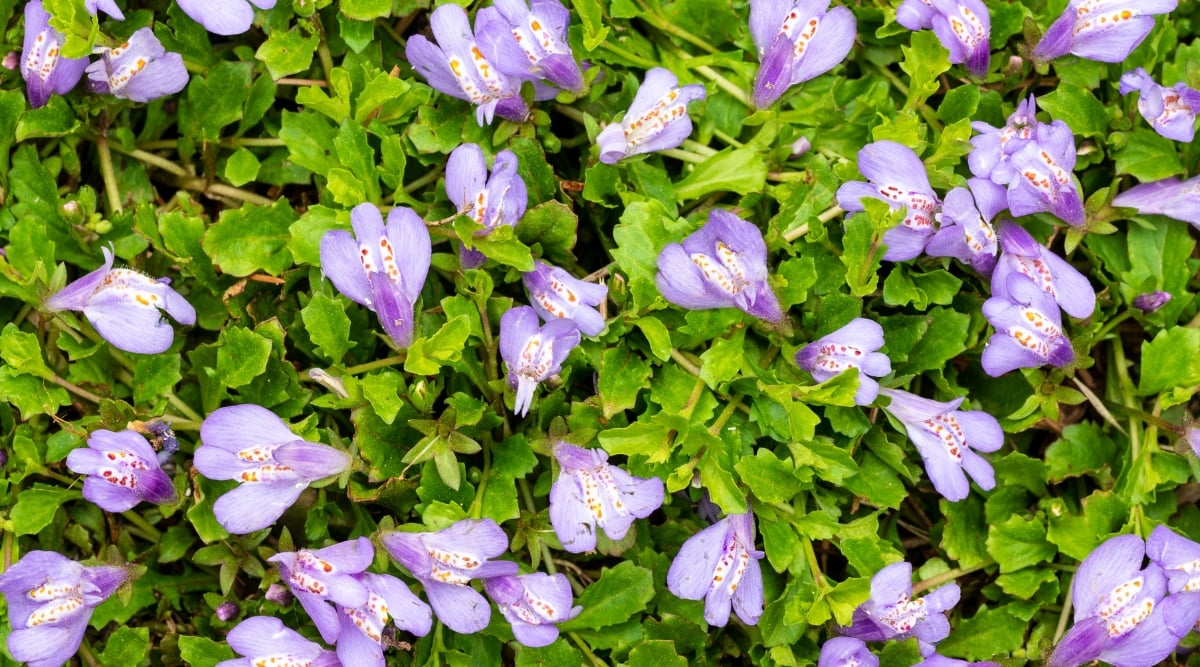
Dwarf Carpet of Stars (Ruschia lineolata ‘Nana’)
This in high spirits - calibre lawn alternative is amazingly hardy and vibrant green , piddle for a gorgeous manicure display . The drouth - patient of carpet of star is technically an evergreen succulent that remain under 2 ” tall . No mowing is want !
The confect - denude pink heyday are daisy - like and bloom from former spring to early summer . This industrial plant rise in light tint to full sun and prefers well - drained soil with occasional irrigation . It support mild frosts but should n’t be grown in extremely cold regions . Some people describe that it tolerates walking traffic , while others suggest only engraft it in low - traffic areas .
The flatness - forming plant come in several varieties , with ‘ Nana ’ being the most popular lawn replacement . It is honest to absent existing sodomite , undo the grunge , and sum up a thin level of new surface soil .
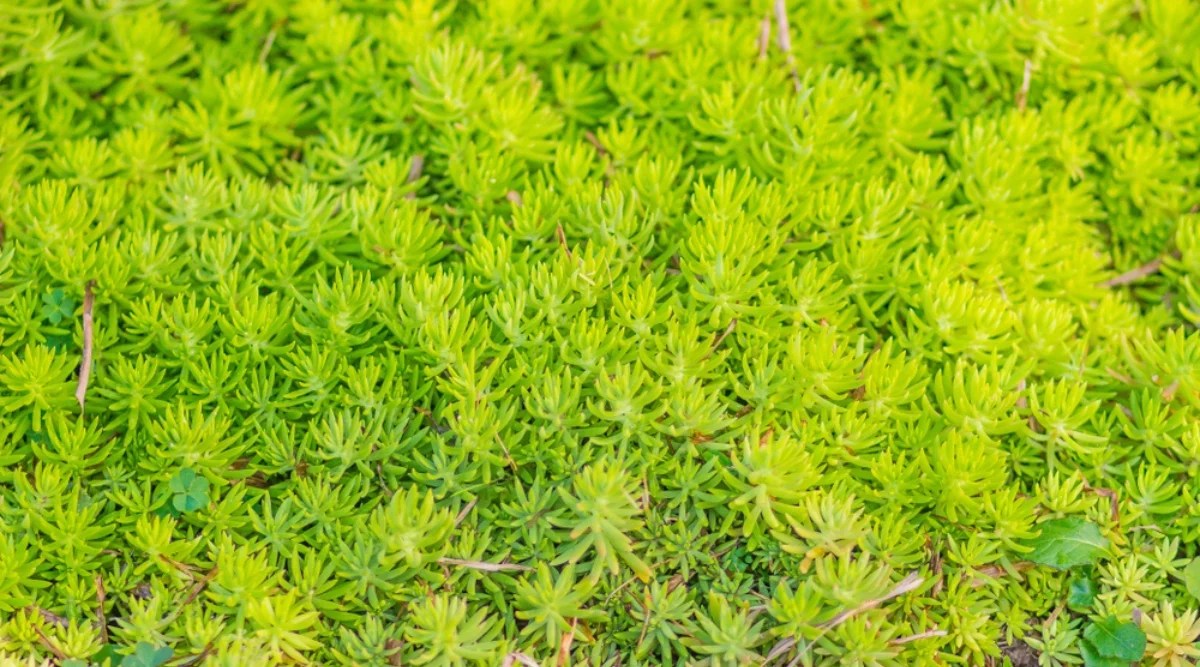
Purchase some dwarf Carpet of Stars plugs and plant them 6 ” aside . weewee every daylight for just 5 - 10 minutes during the first few weeks , and presently , your lawn will be filled with a verdant unripe lustrelessness .
Creeping Mazus (Mazus reptans)
Mazus reptansis a fantastic groundcover plant that blooms beautiful purple - blue flowers in early summer . Its tight - growing foliage covers your lawn in a impenetrable mat of bright green leaves that do n’t mind being walked on . The works is remarkably long-lasting and drouth - tolerant , meaning it wo n’t need much maintenance besides casual mowing .
All this plant asks for is average moisture and an annual lotion of boring - going fertilizer or compost . It needs more water than other option on this list , but not most as much as pasture . It tolerates full sun or fond shade and fill an arena promptly . Just six pocket-sized plants per square railway yard will spread into a adorable groundcover mat .
If your lawn grows in heavily pack together clay , this option wo n’t do well . The grime take to be loamy and well - enfeeble . If I were shifting from turfgrass to pussyfoot mazus , I would start by smothering the green goddess with a tarp for 2 - 3 weeks .
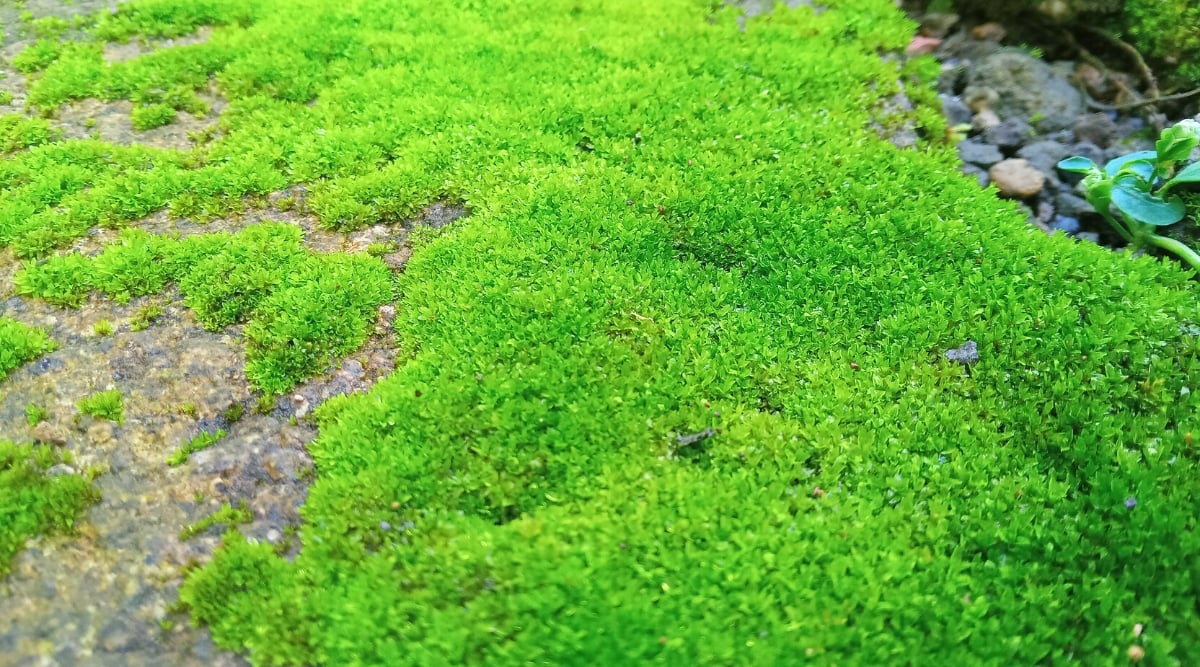
Then , spread a 1 - 2 ” thick bed of compost over the top and expend a retentive - tine large-minded fork to loosen the intact lawn . This may be a sweaty task , but you only have to do it once ! lastly , direct seed or transplant creeping mazus in the spring or fall and expend overhead sprinklers once or twice a week until established .
Low-Growing Sedum (Sedum spp.)
If you have a lawn area with very little water where most grass or other plants neglect to uprise , this is the lawn option for you ! Sedums or stonecrops aregroundcover succulent plantsthat come in various shapes and color , make them a versatile and low - maintenance choice for a lawn .
Depending on the species , they grow 1 - 6 ” tall and command very little maintenance . They are unco drought - tolerant , making them sodding for regions where summertime water restrictions are in effect . The delightfully textured plant much grow like mourning band .
The only tangible caution to sedum as a lawn is it does n’t tolerate heavy base traffic very well . The fragile succulent leaves and stanch break off easily if they are regularly trodden across .

This is not the ground cover for households where kids want to run in the thousand all summer long . Instead , flora low - growing sedum in lesser - used cosmetic area like rock gardens or side edge of your house .
Moss (Bryophyta)
If you have systematically faced pale or brown grass issues in a umbrageous lawn , moss is your new best friend . Moss lawn require minimum maintenance and make a lush , green rug in your landscape .
They feel so soft and cushiony to walk on barefoot , almost like nature ’s carpeting . Best of all , they do n’t mind soggy or compacted soils .
Unsurprisingly , moss lawns are very athirst . If your lawn receives shining fair weather and farseeing periods of drouth , do not plant moss ! allow this flat coat cover for shady , cool areas beneath tree or where piss does not run out well . Unlike most plants , moss actually prefers to grow on heavy airfoil , so you do n’t have to occupy about broad furcation or tilling the ground .

The winder is to smother the forage with cardboard or newsprint , and then press chunk of moss into the dirt and secure it with landscaping personal identification number while it gets establish . Interestingly , moss is an ancient Bryophyte that spread by spores rather than semen .
The only real requirement that moss makes is for acidic soil . These low - farm verdant species typically mature in coniferous forests where the continuous falling of evergreen tree phonograph needle acidifies the grime . If your soil is too alkalic , moss will fight .
Most turfgrass lawns have soil that is too alkaline for moss . However , those with heavy clay soil may be naturally acidic . you could employ a sulfur powder to amend the soil down to 5.0 or 5.5 . Use a home soil pH examination to check the acidity before planting .

Buffalo Grass (Bouteloua dactyloides)
If you still want an aesthetically pleasing grassy lawn for good afternoon pushover or playday with children and pets , this aboriginal grass is the perfect alternative to turfgrass . aboriginal to North America , buffalo grass is a drought - kind pot that forms a verdant plush carpet . The delicately - textured blades stay late green even in hot , arid climates , stool it ideal for xeriscaping or humble - water landscape gardening .
This grass species develop wild throughout the Great Plains and was a common source of Native American food and medicament in wild prairies . Buffalo grass has a very deep stem system that can access water deeply in the soil , even during the most intense summer droughts . It is also highly free-enterprise with weeds , have in mind that no weedkiller or hand - pulling are needed !
Native lawn alternatives are amazing for providing home ground and solid food for local worm and wildlife . This is a extremely bionomical pick that basically wish for itself .

All you need to do is smother or till your existing lawn and directly sow the source about ¼ to ½ inch late , then add a fine layer of topsoil over it to ensure seed - to - dirt contact . Do n’t constitute any deeply than ½ inch in the grime ! Just a few bout of overhead irrigation , and your buffalo grass will take off in no time ! In rainy calendar month , the only care that it needs is pout to keep it humble to the footing .
Yarrow (Achillea millefolium)
For a wildflower lawn , consider the beautiful andresilient native yarrow plant . Yarrow is a intrepid perennial with fern - same foliation and clusters of modest , colorful flowers . The gorgeous umbel - shaped white flowers are extremely beneficial familiar works that attract butterfly stroke , bees , and beneficial predatory insect to your garden .
Yarrow can grow quite tall ( up to 36 ” ) if give to its own devices . This lawn alternative requires mow every calendar month or so if you ’re used to a manicure coming into court . The bonus is the foliage smack delightfully remindful of honeysuckle . However , you wo n’t get any flowers with this technique .
If you ’re OK with a wildflower prairie look , you may certainly leave yarrow to grow into a glorious knee joint - high flowered display . It tolerates compacted and pitiable filth , raise well alongside other native wildflowers like purple coneflower , coreopsis , and black - eyed Susans .

Dwarf Mondo Grass (Ophiopogon japonicus)
This weed - like primer coat cover has dark unripe , strappy folio and is a great lawn alternative in shady low - dealings areas . It is an evergreen perennial that naturally suppresses weed with its dense Master of Arts in Teaching - alike growth . Requiring almost no maintenance , this visually appealing grass offer almost all the benefits of turfgrass without any of the drawbacks .
Dwarf mondo grasscan conform to a range of filth type and conditions , from moderate shadiness to full Dominicus . For the darkest green hue , arise in the shade . Grow in dribble sunlight beneath some tree diagram cover for a lighter fleeceable color .
This perennial is great for those areas where traditional lawn grass struggles to grow or as an edging and pathway plant life . While it ca n’t tolerate as much foot dealings , it is unmistakably lush and fast - growing .

Dwarf mondo grass is a flake particular about source . The seeds are best harvested overbold from a neighboring maculation because store - bought ones run to have low germination rate .
Divisions and organ transplant are more reliable means of base your lawn planting . This species is a fair slow broadcaster , so be patient and plant closer together ( as near as 4 - 6 ” between plants ) for quicker reportage .
Chamomile (Matricaria chamomilla L.)
camomile lawns are not only visually charming but delightfully fragrant . When you walk on them , they occupy the yard with the sweet aroma of chamomile tea . This herbaceous plant ’s carpet has a indulgent , frilly meadow coming into court with feathery foliage and daisy - similar flush . What a amatory lawn addition !
This low - growing perennialrequires minimum upkeep other than occasional mowing to keep it tidy . Chamomile can originate up to 24 ” tall , so keep it pruned or cut down for lawn purposes .
This is the perfect lawn substitute for full Dominicus areas with well - drained orbit . The plant tolerates drought and direct sunshine whileattracting good insectsand pollinator .

It also establishes very quickly in quality soil as long as the seed is sown densely . you may rototill or smother your grass before planting and optionally propagate a layer of compost or topsoil over the top to accelerate establishment .
Blue Star Creeper (Isotoma fluviatilis)
This ground - hugging perennial has delicate star - alike blue flowers far more attractive than a stock turfgrass yard . Blue mavin creeperenjoys partial shade to filtered sun beneath landscape trees or shrubs . The dazzling pastel blue and fleeceable presentation will captivate passersby all summertime long , and because it stay less than 6 ” tall , little to no mowing is required !
The dense mat of leafage are aesthetically pleasing and course suppress weed ontogeny . This various option can get as a lawn or mete plant that by nature fill between stepping stone and pathways .
The works grows rapidly and spreads by hush-hush runner , so it can easily overtake a grass lawn . Your main challenge will be containing the works , as it can choke out other low - growing perennial if you are n’t heedful . Fortunately , it ’s not trespassing , and you may insure grim hotshot tree creeper by keep it in a limited space ( like a lawn delineate with a sidewalk or sway borderline ) , watering less , and avoiding fertilizer .

you could find this perennial at most greenhouse and divide the root balls to get more bang for your buck . Seeds are also useable , but the propagation process is more complicated .
puritanic wizard crawler can accommodate to many wet weather and does n’t ask much irrigation except during farsighted drouth . In fact , you may want to fend off irrigating so the works does n’t spread too far and wide . The delicate flowers are astonishingly tough , so you may freely take the air on them .
Irish Moss (Sagina subulata)
Irish mossis an emerald - greenish velvety lawn choice that thrives in damp , nerveless area of your yard . This groundcover moss is undecomposed for sway garden , rainfall gardens , fissure , or dark , wet areas where other plants fight to hold out .
The dumb growth of Irish moss is attractive in the yard while prevent erosion and boney gigantism . The verdant exhibit produce adorable white bloom in the spring . near of all , Irish moss feels plushy and ask round to take the air on , double-dyed for a tranquil garden ambience .
The key drawback to Irish moss is its inability to thrive in hot areas of your yard . Like most mosses , it needs to abide systematically moist and cool . With enough water , it can tolerate more sunshine , but you may need to irrigate once or twice hebdomadal .

Fortunately , this means the industrial plant appease exceptionally down on the ground . Maxing out at just 2 ” tall , you never have to concern about mowing !
Bugleweed (Ajuga reptans)
As one of the easy perennial to distribute by division , bugle is the perfect lawn option for spring or accrue planting .
The low - spreading ground cover is touch to mass and uprise well in sunlight or refinement . Some moot the dull coverage to be more attractive than turfgrass , and it produces lovely majestic flowers throughout the summertime .
quash planting bugleweed in little distance , as it can spread quite rapidly via contrabandist . This plant is aggressiveand can congest out more delicate plants if you are n’t careful .

This is smashing news for pass your existing grass but not so great if you are essay to establish ornamental or annual flower beds nearby . Keep your bed raise up with a border so bugleweed wo n’t ramble its way in .
Green-and-Gold (Chrysogonum virginianum)
If you have rafts of tree diagram in your curtilage , green - and - goldis the lawn option for you ! This native perennial groundcover has endearing heart - shaped leaves and bright yellow efflorescence that kick upstairs any lawn from politic to gorgeous . It loves shade and works magnificently in tree - covered yards , woodland gardens , or any damp , nerveless orbit where grass wo n’t grow .
set a serious soil intermixture in advance with plenteousness of organic matter to hold water . Green - and - gold is extremely resilient and does n’t require much more than reproducible moisture . The plants flower from spring through early fall and welcome a vast variety of native pollinators and good insects .
These are best propagate by division or transplants in tardy spring . Be certain to find out a variety that is produced by stolons ( runners ) so it will spread quickly . This plant organize a obtuse carpeting of leave of absence that naturally suppress weeds , so you do n’t have to occupy about herbicides .

Corsican Mint (Mentha requienii)
This extremely fragrant mint variety has adorable little leave and a creeping habit . Corsican mintis low - arise , perfect for planting between pavers , raised bed pathways , or in rock gardens . This lawn option does dear in fond subtlety and cooler climate . Do n’t switch to a mint lawn if you have farsighted , red-hot , teetotal summer !
This redolent herb is visually appeal for very small maintenance . As it ’s just 4 ” tall with dense ego - sowing development , you do n’t need to mow or Mary Jane , and it does n’t mind animal foot dealings . However , if you involve to verify this mint from creeping into neighboring beds , a very scummy mow or snip will be useful for reducing its growth . Like most mints , the leaf are comestible and delicious , perfect for tea !
Dichondra (Dichondra spp.)
You ’d be severely - press to get hold turfgrass that only needs pout 3 - 4 times per year ! But Dichondra fit the invoice . This gloomy - maintenance and handsome groundcover tolerate light foot traffic and stays modest to the earth . It is a warm - season perennial that savor mild conditions with full sunlight . Its spreading habit can easily outcompete survive Gunter Wilhelm Grass .
The vivacious green , meat - shaped , and rounded leave-taking only maturate 3 - 4 ” marvellous . Best of all , Dichondra is unco drought broad . It need less water than any veritable lawn but enjoys well - drained grunge . Do n’t establish this species in a waterlogged area .
The only problems with Dichondra are its low permissiveness to walk dealings , its condescension for shade , and its susceptibleness to pests . Plant it in a lawn area that does n’t get heavily used . annul this plant life if you have major job with cutworm or flea mallet , as they feed on the leafage sharply and could go around to your veggie garden .
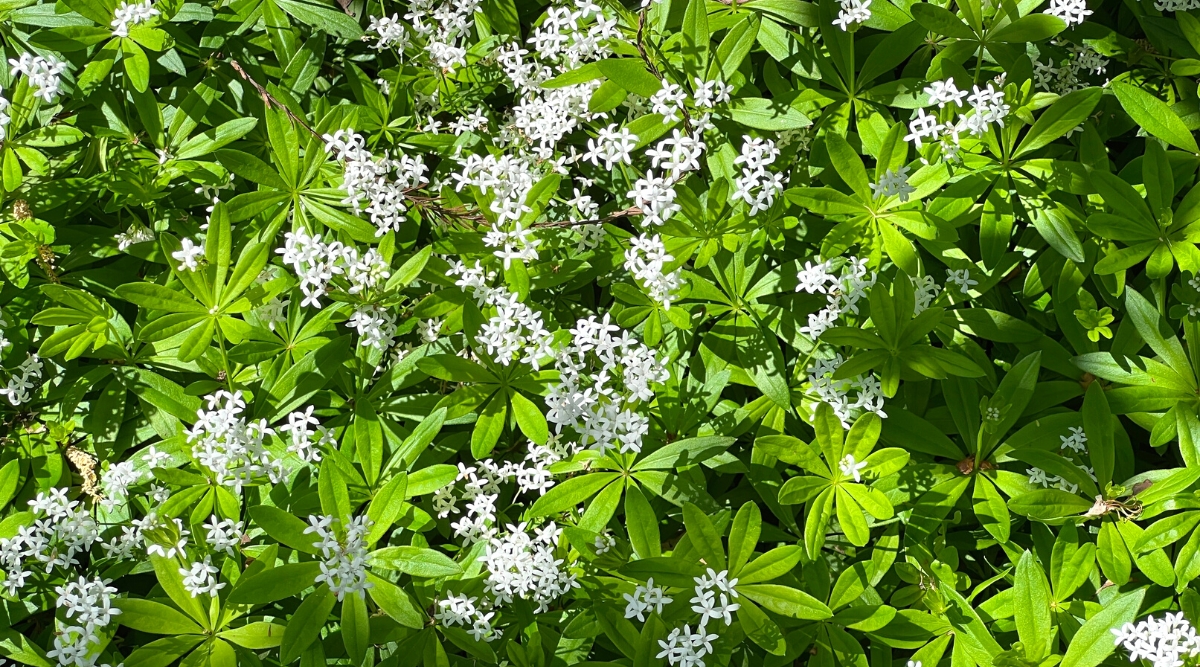
Kurapia (Lippia nodiflora)
This herbaceous ground cover version requires 75 % less water than a received lawn . Kurapiais an challenging Japanese evergreen that has become increasingly popular in drought - stricken areas of the United States as well as rainy region . It is easygoing about almost everything except frost . The supply ship works die back during frosts and comes back in the spring .
you’re able to buy kurapia as superoxide dismutase or plugs to instal a new lawn rapidly . The plants require good aeration and watering during the establishment phase . Once rooted , it is highly effectual at controlling erosion and suppressing weeds with minimum water requirements . It is also disease - resistant and adaptive to many soil type .
Kurapia only grows to about 3 ” magniloquent and bring about endearing blank or pallid over-embellished flowers during the summer . It resembles trefoil in growing habit and flowered display . The radical - mysterious root organization live 5 - 10 feet into the soil , make a uncompromising structure for slopes and hillside . This also stand for it can determine H2O even in the driest of climates .
Sweet Woodruff (Galium odoratum)
As a last fragrant , frilly lawn option , sweet woodruff is a endearing creeping perennial that effortlessly colonizes shady areas . It maturate from rhizomes and distribute into a dense footing cover that in effect outcompetes weeds . The jolting - textured leaves are set in whorls around the stems , creating a unambiguously captivating bright dark-green visual on your lawn .
Beware that this plant is consideredtoxic to pets and mass , so it ’s not recommended in lawns with hot dog . The plant can also maturate 6 - 8 ” marvellous , so it may require some mowing to remain compact .
Final Thoughts
With so many groundcover choice , getting rid of your in high spirits - maintenance grass is a no - brainer . The key to a successful lawn replacement is species choice . If your pace gets blazing blistering direct sunshine , try clover or creeping mazus . assay Irish moss , creeping thyme , or blue star tree creeper if your yard is particularly fishy or cool . compensate close tending to theexpected industrial plant height . If you do n’t need to mop at all , stick with ultra - low - grow specie like Corsican mint or Dichondra .